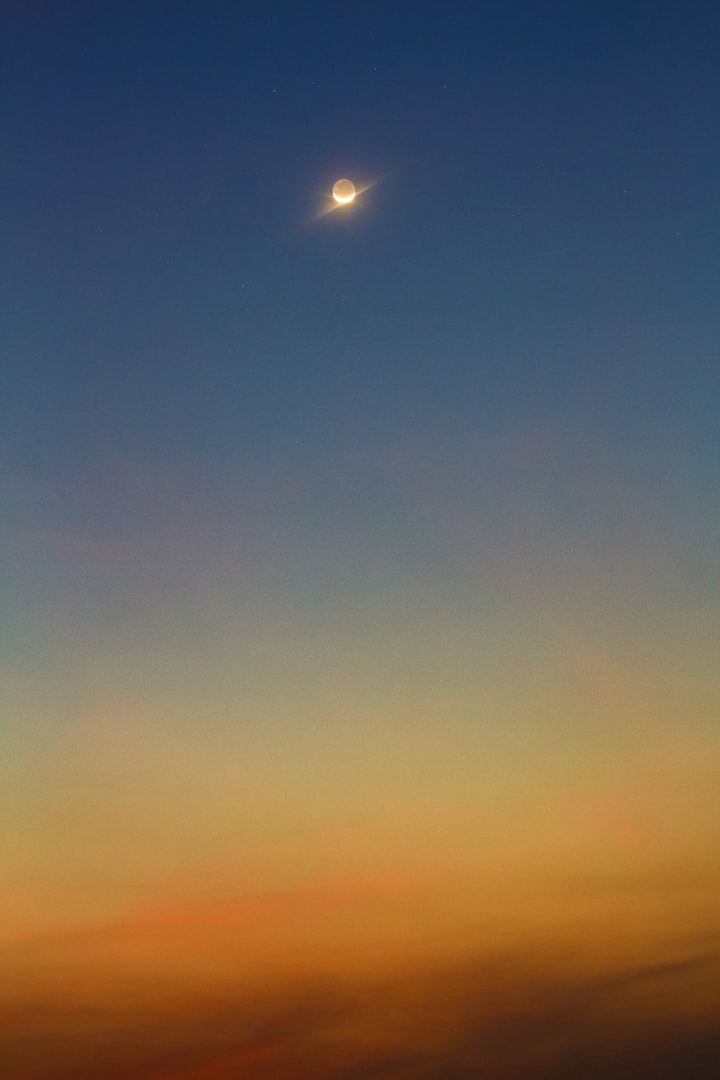
- Very much like a vehicle battery.
- [Matt] This is our reenactment
of a Lunar Lander showing up at the moon.
(playful music)
- I feel I somewhat like that.
- Are you game?
- That's right. Also, 3, 2, 1.
(surging air)
- OK.
- See, as may be obvious, it's extremely, rough
however, there's one incredibly exact part, the soil.
This is lunar regolith simulant or counterfeit moon soil.
It was made by a lab that is part
of a little however developing bungalow industry.
Incidentally, soil
on the Moon is nothing similar to its cousin here on The planet.
It's odd, flighty, and, surprisingly, perilous.
Furthermore, as additional missions go for the gold
- [Voiceover] Back to the moon and then some
- Simulant is staying away from some possibly
devastating spats with the genuine stuff.
- [Voiceover] That somewhat fly.
- So these are tests of reenacted lunar regolith
which specialists will call lunar soil or soil or residue.
We got these examples by requesting them
on the web, and the account of why it's so
promptly accessible is somewhat entrancing.
What's more, it begins with this:
- [Matt] The principal tests taken of the Moon
during the Apollo program affirmed
that lunar regolith is odd and dreadful stuff.
Obviously, there's no genuine climate on the moon.
So shooting stars have beat its bedrock into
a blend of sharp spiked particles and loads of residue.
Furthermore, without wind or downpour to climate that down,
the surface stays barbed and dusty until the end of time.
Shooting stars additionally liquefy the dirt on influence
also, make little shards of smooth material
called Agglutinate.
What's more, that dirt is continually being prepared
by sun oriented breeze causing substance changes
in the actual minerals.
It's an absolutely outsider material.
Also, during the Apollo missions, it got all over the place.
It meddled with instrument readings, destroyed spacesuits,
stopped up gear, aggravated space travelers eyes
also, the lungs.
Genuine terrible news.
NASA's answer was to make counterfeit lunar soil here
on Earth to better prepare their equipment
prior to giving it something to do on the moon.
Presently they've made and tried parcels
of simulants throughout the long term, and all the more as of late
have pulled in confidential organizations to help
with huge scope creation.
That was a shrewd move
since nowadays we're in somewhat of a Moon blast.
- [Voiceover] NASA says it's opening a fresh out of the plastic new part
in lunar investigation
- [Voiceover 2] Beijing's objective to put its own
space travelers on the moon by 2030.
- Four phase motor turn over.
- [Matt] With Artemis and numerous different missions
not too far off. The simulant business is energetic.
- [Anna] Our people group difficulties us
furthermore, they push us extremely hard
cause they're like, alright, you know,
I really want three kilograms. What's more, we're like, here you go.
Also, they're like, OK, could you at any point give us like 50?
What's more, we're like, okay, gimme a smidgen of time.
We got this.
And afterward they're like, okay,
so presently gimme 50 tons.
- [Matt] Exolith Lab is one of NASA's essential providers
of lunar simulants, and they strolled us
through their interaction for making this stuff without any preparation.
It begins with an inquiry.
"Where on the moon do you want to reproduce?"
- [Anna] So when you check the Moon out
the lighter areas is what we call the Good countries
and afterward the Female horse districts are the more obscure spots.
So the mineralology there is really unique.
- So we should think about this Good country test,
in light of investigations of genuine lunar examples,
the recipe from Exolith is a lot of anorthosite
a little basalt, and a smidge of ilminite,
pyroxene and olivine.
To begin with, the group sources the natural substances
from mines and different providers.
Some of it shows up pre-squashed, different examples not really.
- [Anna] It's actually similar to a mining activity.
A portion of our materials come in huge rocks.
So what we do is we toss them in a single smasher
then, at that point, we toss them in another gigantic smasher.
We additionally need to strainer it out.
A ton of the handling that we do
on our materials through the pounding
likewise helps them accomplish that ideal shape,
that ideal spikes that we're searching for.
- [Matt] Now, for a greater amount of customized orders
they could actually blend in some reenacted aggultinate.
That is the abnormal smooth material.
At last, every one of the fixings get combined as one
in the legitimate proportion.
- It's similar to baking.
What you do is you follow a recipe, you gauge
out the various materials, and afterward we let it blend
for some time until it's overall quite homogeneous.
- Very much like that.
You have moon soil.
So how are people really doing the simulants?
Indeed, a wide range of things.
They're sorting out some way to dive into it, explore wanderers
through it, develop plants in it, extricate oxygen from it.
Everything we really want to do to invest more energy on the Moon.
Presently, nobody energizer is an ideal substitute for
those analyses.
It's simply excessively difficult to make a reproduction that is great
all around.
Be that as it may, various energizers can get very close
on individual elements like the size
also, state of particles or of the substance arrangement.
So analysts can arrange the right energizers
for the right test.
- Rolling.
- This will shake a great deal.
- [Matt] Finding out pretty much all that work motivated us to
accomplish something with our examples.
So we thought we'd take a gander at an issue that could truly
imperil our drawn out anticipates the moon.
It begins when you point a rocket motor
and all that dusty, barbed regolith.
- That was crazy.
- Decent.
(snickering)
- At the point when you attempt to land a rocket on the moon
the rocket exhaust is coming
out at huge number of meters each second.
- [Matt] Phil Medsker and his partners have spent
20 odd years concentrating on what occurs straightaway
which seems to be this.
At the point when rocket exhaust raises a ruckus around town, it sends
up a colossal crest of rapid regolith
like it would on The planet assuming that you were to
land a rocket some place without a platform.
In any case, with low gravity
what's more, no genuine air, that dirt voyages.
- [Phillip] There is no distance
on the Moon that is far enough away to be protected
from certain particles hitting at that distance.
- [Matt] Meaning more modest particles
from a solitary arrival can shoot across the whole moon
- Also, consequently whatever's uncovered
to that shower will be hit
by particles going a large number of meters each second.
- [Matt] We even have an illustration of
this in November of 1969, Apollo 12 landed close
Assessor 3, which is an uncrewed NASA create that
two or three years prior.
- They landed 160 meters away, in light of the fact that
at the time they felt that was far enough away
with the goal that the rocket exhaust wouldn't harm the Assessor.
Turns out that was, you know, a tremendous
tremendous under forecast of how far the ejector goes.
So when they got the pieces back from Assessor 3 back
to Earth, they figured out they were totally sandblasted.
The coatings were worn off.
The paint was totally infiltrated
what's more, loaded up with lunar residue particles.
It totally dissolved the whole surface of the Assessor.
- [Matt] As the lunar economy warms up
furthermore, the moon becomes more busy,
these little particles could cause greater
furthermore, more serious issues.
Harm from regolith tufts could cost huge load of cash,
put future missions in danger,
indeed, even reason international difficulty.
- Since, supposing that one nation lands on the moon
and afterward sandblasts and harms the
equipment of another country
then, at that point, in fact you're abusing the Space Deal
since you're not permitted to cause any damage
to different nations resources in space.
There's likewise a worry
about nations asserting an unnecessarily huge impact zone
which could be a method for getting around the Space Settlement
what's more, guarantee defacto domain on the Moon.
- [Matt] Luckily, there are loads of arrangements
on the table.
You could normalize landing zones
for everyone, utilizing the Moon's
slopes and valleys as safeguards.
In any event, building platforms out of regolith.
Furthermore, simulant is fueling a ton of that R and D.
NASA's bustling trying regolith based development materials
also, doing considerably more smart adaptations
of our little examination.
There's still much more work to be finished
in any case, Phil says there's likewise been much more acknowledgment
of the issue than there used to be, which feels like a success.
- The fact that I should seriously mull over to makes expecting there whatever
be my all consuming purpose, I feel that would be it.
Yet, better believe it, I feel better
about where we are and where it's been up until this point.
- Obviously, mankind has its sight set
farther than the Moon and we have regolith for that as well.
Well, here's certain Mars regolith full
of various minerals and properties.
The fact of the matter is, the requirement for this stuff is staying put
what's more, there's a highminded cycle to it as well.
Well, the more energizer that is accessible
the more gets utilized here on The planet
also, perhaps more missions occur out there
- [Anna] The more that individuals approach getting things done
like this sort of exploration with our stuff, the more
it will propagate that interest.
So I really do want to be a piece of it as it's working out
- [Voiceover] And lift off of Artemis 1.
- [Anna] and afterward additionally assisting it with opening up
to everybody will sort of get that going even
all the more quickly.
- So envision being
on a planet shrouded in this stuff.
Clearing for eternity.
- Try not to clear up the Lunar Lander. Lunar Wanderer. (giggling)






Comments
There are no comments for this story
Be the first to respond and start the conversation.